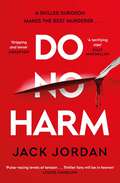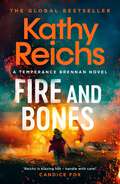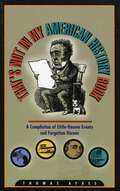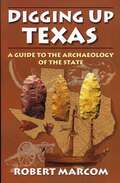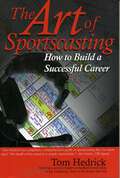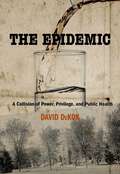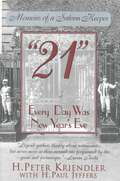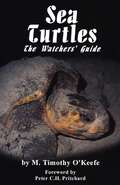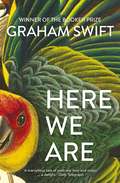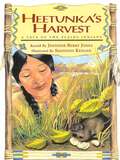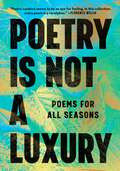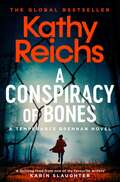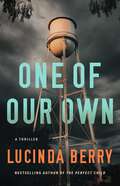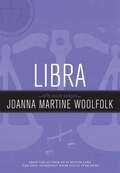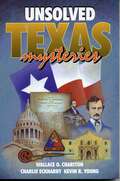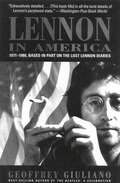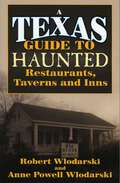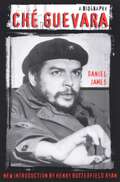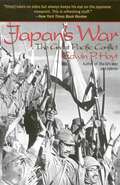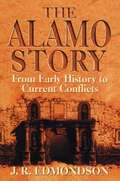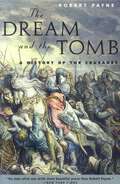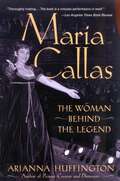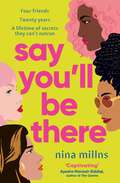- Table View
- List View
Do No Harm: the GRIPPING Sunday Times bestseller!
by Jack JordanA skilled surgeon makes the best murderer . . . * THE SUNDAY TIMES BESTSELLER * * WATERSTONES THRILLER OF THE MONTH * 'Chilling and perfectly paced, one to put on the very top of your TBR!' Sarah Pearse 'Thriller fans will be in heaven' Louise CandlishThe man lies on the table in front of me. As a surgeon, it&’s my job to save him. As a mother, I know I must kill him. You might think that I&’m a monster. But there really is only one choice. I must get away with murder. Or I will never see my son again.I&’VE SAVED MANY LIVES. WOULD YOU TRUST ME WITH YOURS?Readers can't get enough of Do No Harm . . . (***** five star reader reviews) &‘Absolutely phenomenal&’ &‘Kept me hooked from the very start!' &‘Believe me, you&’ll not want to put this down&’ &‘Everything about Do No Harm was absolutely brilliant' &‘So full of tension and twists!&’
Fire and Bones (A Temperance Brennan Novel #23)
by Kathy Reichs#1 New York Times bestselling author Kathy Reichs returns with a twisty, unputdownable thriller featuring forensic anthropologist Temperance Brennan, who finds herself at the centre of a Washington, D.C., arson investigation that spawns deepening levels of mystery and, ultimately, violence. Always apprehensive about working fire scenes, Tempe is called to Washington, D.C., to analyse the victims of a deadly blaze and sees her misgivings justified. The devastated building is in Foggy Bottom, a neighbourhood with a colourful past and present, and Tempe becomes suspicious about the property&’s ownership when she delves into its history. The pieces start falling into place strangely and quickly, and, sensing a good story, Tempe teams up with a new ally, telejournalist Ivy Doyle. Soon the duo learns that back in the thirties and forties the home was the hangout of a group of bootleggers and racketeers known as the Foggy Bottom Gang. Though interesting, this fact seems irrelevant – until the son of a Foggy Bottom gang member is shot dead at his home in an affluent part of the district. Coincidence? Targeted attacks? So many questions. As Tempe and Ivy dig deeper, an arrest is finally made. Then another Foggy Bottom Gang-linked property burns to the ground, claiming one more victim. Slowly, Tempe&’s instincts begin pointing to the obvious: somehow, her moves since coming to Washington have been anticipated, and every path forward seems to bring with it a lethal threat.
That's Not in My American History Book: A Compilation of Little-Known Events and Forgotten Heroes
by Thomas AyresHistory classes reduce America's story into a dry litany of dates, names, and places. That's Not in My American History Book tackles the messy details, reclaims disregarded heroes, and sets the record straight. This book explains why July 4th isn't really Independence Day, reveals 19th century mudslinging that labels Andrew Jackson a "murderer," and even unveils the only vice president with a number-one pop hit. With insight, wit, and irreverence, Ayres uncovers our overlooked past.
Digging Up Texas: A Guide to the Archaeology of the State
by Robert MarcomTake a guided tour of more than 15,000 years of life in TexasMr. Marcom has authored a volume that makes the incredibly diverse archaeological record of Texas accessible to interested laypersons and beginning avocational archaeologists.
The Art of Sportscasting: How to Build a Successful Career
by Tom HedrickAuthor Tom Hedrick has elicited and gathered strategic and tactical advice from the top professionals in sporstcasting. Over 76 top-notch sports broadcasting personalities share their experience and acquired wisdom, including Curt Gowdy, Ray Scott, Bob Costas, Jack Buck, Jim Nantz, Keith Jackson, Bob Starr, Joe Castiglione, Kevin Harlan, and Mitch Holthus. While their stories are enjoyable and motivating, these pros do more than reminisce. They itemize specific actions with lists of do's and don'ts and tips. Most importantly, they talk about the strong personal values and philosophies that are and have been essential to their success and to the journey for getting there.
Epidemic: A Collision of Power, Privilege, and Public Health
by David DekokThe Epidemic tells the story of how a vain and reckless businessman became responsible for a typhoid epidemic in 1903 that devastated Cornell University and the surrounding town of Ithaca, New York. Eighty-two people died, including twenty-nine Cornell students. Protected by influential friends, William T. Morris faced no retribution for this outrage. His legacy was a corporation—first known as Associated Gas & Electric Co. and later as General Public Utilities Corp.—that bedeviled America for a century. The Three Mile Island nuclear accident in 1979 was its most notorious historical event, but hardly its only offense against the public interest.The Ithaca epidemic came at a time when engineers knew how to prevent typhoid outbreaks but physicians could not yet cure the disease. Both professions were helpless when it came to stopping a corporate executive who placed profit over the public health. Government was a concerned but helpless bystander.In this emotionally gripping book, David DeKok, a former award-winning investigative reporter and the author of widely praised books on the mine fire that devastated Centralia, Pennsylvania, brings this tragedy home by taking us into the lives of many of those most deeply affected.For modern-day readers acutely aware of the risk of a devastating global pandemic and of the dangers of unrestrained corporate power, The Epidemic provides a riveting look back at a heretofore little-known, frightening episode in America&’s past that seems all too familiar.Written in the tradition of The Devil in the White City, it is an utterly compelling, thoroughly researched work of narrative history with an edge.
21: Every Day Was New Year's Eve
by H. Peter KriendlerThe story of New York's '21' Club is the story of American glamour in the twentieth century. In his star-studded memoir, saloonkeeper Peter Kriendler—younger brother of Jack Kriendler, cofounder of '21'—paints a spellbinding portrait of the club through its early years, its birth as a Greenwich Village speakeasy, its move to midtown during Prohibition, the tough days of the Great Depression, the dazzling Camelot nights, and the swinging go-go years as it became America's most legendary restaurant and a second home to the most powerful people in business, politics, and entertainment.
Sea Turtles: The Watchers' Guide
by Timothy O'KeefeDiscover how and where you can witness sea turtles nesting in Florida. This book not only gives an excellent overview of sea turtle life, it also provides the specifics of appropriate personal conduct and behavior for human beings on turtle nesting beaches.
Here We Are
by Graham SwiftIt is Brighton, 1959, and the theatre at the end of the pier is having its best summer season in years. Ronnie, a brilliant young magician, and Evie, his dazzling assistant, are top of the bill, drawing audiences each night. Meanwhile, Jack – Jack Robinson, as in &‘before you can say&’ – is everyone&’s favourite compère, a born entertainer, holding the whole show together. As the summer progresses, the off-stage drama between the three begins to overshadow their theatrical success, and events unfold which will have lasting consequences for all their futures. Rich, comic, alive and subtly devastating, Here We Are is a masterly piece of literary magicianship which pulls back the curtain on the human condition. 'One to watch for 2020' according to:The Sunday Times The TimesThe Daily Telegraph The Guardian Financial Times Evening Standard The Scotsman The Irish Times 'He tells simple, truthful stories about what feel like real people. Here We Are is a welcome addition to a proud legacy.' The Big Issue The variety of voices and its historical and emotional reach are so finely entwined, it is as perfect and smooth as an egg. Passages leap out all the time, demanding to be reread, or committed to memory... It is perhaps too simple to say that Swift creates a form of fictional magic, but what he can do with a page is out of the ordinary, far beyond most mortals&’ ken.' Rosemary Goring,The Herald'Here We Are is a subtle portrait of a vanished world, with moving passages about the problems of wartime evacuees returning to impoverished London life after the wonders of the countryside.' The Independent &‘In Here We Are, Swift does not just dwell on the pivotal moments of our lives, but traces their shockwaves both forward and back. Moving seamlessly from pre-war to post, from the events of one illusory, youthful summer to the present, we are given candid access to the innermost reflections of three people who loved and betrayed each other. The end result is the stuff of life, an enduring mystery that Ronnie, Evie, Jack - that we all - must live with. I thought it was wonderful.&’ Joseph Knox, author of Sirens&‘As with all his books, it&’s the moments of quiet, undramatic poignancy that stay with you&’ Sunday Express&‘a quietly, devastating, magical novel&’ Telegraph&‘With a wizardry of his own, Swift conjures up an about-to-disappear little world and turns it into something of wider resonance&’ Sunday TimesPraise for Mothering Sunday: 'Bathed in light; and even when tragedy strikes, it blazes irresistibly… Swift&’s small fiction feels like a masterpiece&’ Guardian &‘Alive with sensuousness and sensuality … wonderfully accomplished, it is an achievement&’ Sunday Times &‘From start to finish Swift&’s is a novel of stylish brilliance and quiet narrative verve. The archly modulated, precise prose (a hybrid of Henry Green and Kazuo Ishiguro) is a glory to read. Now 66, Swift is a writer at the very top of his game&’ Evening Standard &‘Mothering Sunday is a powerful, philosophical and exquisitely observed novel about the lives we lead, and the parallel lives – the parallel stories – we can never know … It may just be Swift&’s best novel yet&’ Observer
Heetunka's Harvest: A Tale of the Plains Indians
by Jennifer Berry JonesA retelling of a Sioux legend recounts how a woman learns a lesson about selfishness when she take beans from Heetunka the mouse without leaving a gift in return, and so brings the wrath of the gods down on herself.Ages 5 to 12
Poetry Is Not a Luxury: Poems for All Seasons
by AnonymousFrom the creator of the beloved @PoetryIsNotaLuxury Instagram account, a gorgeously wrought poetry anthology that is a gift and a guide for readers through every season of life.Inspired by writer and philosopher Audre Lorde&’s famous claim: &“Poetry is not a luxury,&” this anthology proves the vitality of poetry as a crucial source of inspiration, comfort, and delight. In a first section, &“Summer,&” you&’ll find lush landscapes and love poems for weddings and anniversaries, alongside poems on travel, protest, and expressions of sheer joy and exhilaration. &“Autumn&” ushers in nostalgic poems about home and family and friendship, fall leaves, nesting and gratitude. You may turn to &“Winter&” should you require a poem for mourning, some lyrics for loneliness, or an ode to comfort. Rounding out a year&’s worth of verse is &“Spring,&” in which you&’ll discover celebratory poems, in the form of praise for rain and flowers, new beginnings, and all that the future might hold. Each poem within has been chosen from centuries of verse from around the world, with an emphasis on living poets. Friends old and new await, with selections from Rita Dove, Victoria Chang, Ross Gay, Naomi Shihab Nye, C.D. Wright, Eileen Myles, Ada Limón, Ilya Kaminsky, Jos Charles, and more. From love poems to elegies, from the heights of new love to the furrows of anxiety, from special occasions to a morning pick-me-up, there is something here for longtime poetry lovers and novices, in any season of need.
A Conspiracy of Bones (A Temperance Brennan Novel #19)
by Kathy ReichsTHE SUNDAY TIMES BESTSELLER A RICHARD AND JUDY BOOK CLUB PICK 'Read this book&’ DAVID BALDACCI 'One of the absolute best thrillers of the year&’ JEFFERY DEAVER 'You will find it hard to put down' MARK BOWDEN EVERY BODY HAS SECRETS It all starts with a series of text messages. Each message contains a new picture of a corpse, missing its face and hands. Dr Temperance Brennan needs to find out who the dead man is, and why the images were sent to her. The only problem is, she has been kicked off the team. So she goes rogue, knowing that she is the only one who can solve this case. As she starts her investigation she discovers a connection to a decade-old missing child case. The more she uncovers, the darker and more twisted the picture becomes . . .Praise for A Conspiracy of Bones 'I can&’t recall when this many twists have been so masterfully woven into a novel. A great series has just gotten greater' JEFFERY DEAVER, #1 internationally bestseller author of The Bone Collector and The Never Game 'A Conspiracy of Bones shows off Kathy Reichs&’ dazzling new level of plotting mastery.' KARIN SLAUGHTER, #1 internationally bestselling author of The Last Widow and The Good Daughter 'Reich's fast-paced, tightly-constructed, and very contemporary story dives underground here, both literally and virtually, as she follows the thinnest of threads deeper and deeper into a shocking conspiracy. You will find it hard to put down' MARK BOWDEN, #1 New York Times bestselling author of The Last Stone and Black Hawk Down 'So many pulse-pounding twists and surprises—it kept me guessing till the end!' R.L. STINE, bestselling author Goosebumps and Fear Street 'This is Kathy Reichs doing what she does best: sorting through the bones until the shocking end' BRAD MELTZER, #1 New York Times bestselling author of The Escape Artist 'Kathy Reichs writes brilliant mysteries that are as realistic as non-fiction and as fast-paced as the best thrillers about Jack Reacher or Alex Cross' JAMES PATTERSON 'Nobody does forensics thrillers like Kathy Reichs. She&’s the real deal' DAVID BALDACCI 'Each book in the Temperance Brennan series is better than the last, I just can&’t get enough!' LISA SCOTTOLINE 'Every minute in the morgue with Tempe is golden' THE NEW YORK TIMES BOOK REVIEW
One of Our Own: A Thriller
by Lucinda BerryA suicide prevention hotline volunteer answers a call that turns her world upside down in this edge-of-your-seat original thriller by the bestselling author of The Perfect Child and The Best of Friends.Felicia, a single mother and lawyer by day, volunteers at a local crisis center to give back to her tightknit community in a small Wisconsin town. One night, she answers a horrifying call: through tears, a frantic teenage girl tells her that she was a victim of sexual assault at a local house party. Felicia is shocked, and breaking protocol, she begins communicating with the girl on her own, determined to keep her safe and hold her assailants accountable. But as she gets closer and closer to the truth, she can&’t shake the feeling that she and the girl are connected by more than the phone call. As the girl shares more details, Felicia begins to think the unthinkable—someone close to her may be involved in this heinous crime. As Felicia earns the girl&’s trust and more facts emerge about the incident, she faces a gut-wrenching battle between her protective instincts and the moral responsibility to do what&’s right. This taut thriller is perfect for fans of The Push, Wrong Place Wrong Time, and We Need to Talk About Kevin.
Libra: Sun Sign Series
by Joanna Martine WoolfolkYour Sun sign (often referred to simply as your sign) is the zodiac sign the Sun was traveling through at the time of your birth. Your Sun sign is the most important and pervasive influence in your horoscope and in many ways determines how others see you. It governs your individuality, your distinctive style, and your drive to fulfill your goals. It symbolizes the role you are given to play in this life. It&’s as if at the moment of your birth you were pushed onstage into a drama called This Is My Life. In this drama, you are the starring actor—and your sign is the character you play.This elegant little volume is packed with what your Sun sign tells you about you. You&’ll read about your many positive qualities as well as your negative issues and inclinations. You&’ll find insights into your power, potentials, and pitfalls; advice about relationships, love, and sex; clarification on erogenous zones and how you combine romantically with other signs; guidance regarding career, health, and diet; and information about myriads of objects, places, concepts, and things to which you&’re attached. You&’ll also find topics not usually included in other astrology books—such as how you fit in with Chinese astrology and with numerology.
Unsolved Texas Mysteries
by Kevin Young Wallace O. Chariton Charlie EckhardtWhat happened to the documents captured in the Alamo? Does a ghost actually haunt the state capitol in Austin? Was John Wilkes Booth killed or did he escape and flee to Central Texas? The authors present the known facts and circumstances of these and other mysteries.
Say It Loud!: My Memories of James Brown, Soul Brother No. 1
by Don RhodesWhen Don Rhodes took his seat not far behind Michael Jackson at the funeral of the &“Godfather of Soul&” on December 30, 2006, it marked the close of a forty-year friendship. In Say It Loud! Rhodes pays tribute to James Brown and his storied career, with a close and comprehensive look at the life of the legendary singer at his home in Augusta, Georgia, and the family he left behind.From the evolution of Brown&’s fiery, uniquely rhythmic musical style to his social activism, world travels, run-ins with the law, and four marriages (and uncertain number of affairs), Rhodes provides a sensitive but candid look at the life of the man behind such hits as &“I Feel Good,&” &“Please, Please, Please,&” &“Sex Machine,&” and &“Say It Loud—I&’m Black and I&’m Proud.&” He takes us back to the 1960s, when James Brown and other American soul and rock artists were relieved to find that they had nothing to fear from the Beatles and other British artists taking America by storm—indeed, as some of the Brits acknowledged, the Americans had inspired them. Mick Jagger, whose dance steps were influenced by Brown, once said of him, &“His show didn&’t just have to do with the artist but had to do with the audience. . . . Their reaction was always . . . like being in a church.&” Unlike his friend Elvis Presley, James Brown went on to be a frequent global traveler, adored by fans throughout the world. Say It Loud! bears out the reputation of the man with the famous cape as &“the hardest-working man in show business,&” bringing us the full story of a conscientious performer and consummate professional with a fascinating and controversial personal life. Never-before-published photos, as well as anecdotes from an enduring friendship and details of Brown&’s life at home, will further ensure that music fans of all ages will cherish this tribute to an American icon by a longtime friend.
Lennon in America: 1971-1980, Based in Part on the Lost Lennon Diaries
by Geoffery GiulianoJohn Lennon was a legend in his own time. Deprived of life at a young age, Lennon has become a symbol of the '60s and '70s peace movement. But what do we really know about him as a person?
Texas Guide to Haunted Restaurants, Taverns, and Inns
by Robert WlodarskiGhosts can be encountered anywhere at any time by any person. Why do some people see ghosts more than others? Who knows? Perhaps as some suggest a few people are more psychic or more tuned in than others.
Che Guevara: A Biography
by Daniel JamesThe controversial life and career of Ernesto Ché Guevara (1928-1967) has earned the revolutionary leader admirers and detractors across the world. In his critical biography, Daniel James penetrates the myths that have grown up around Guevara since his death. The biography carefully analyzes the Cold War situations in which Guevara lived and fought, and which turned the young medical student into a guerilla and political theoretician. Ché Guevara: A Biography includes interviews with Guevara's first wife, and extensive information on the revolutionary's early years and family life lacking in other biographies. James also discusses Guevara's actions in Cuba as a leader in the rebel army of Fidel Castro, covering in detail Guevara's military victories, his post-war executions of anti-Castro prisoners, and his criticism of Soviet Communism. This unique and unsparing portrait of Guevara includes and an in-depth examination of his last guerilla campaign in Bolivia.
I Was Anastasia
by Ariel LawhonFrom the bestselling author of The Frozen River comes an enthralling historical mystery that unravels the extraordinary twists and turns in Anna Anderson&’s fifty-year battle to be recognised as Anastasia Romanov. Is she the Russian grand duchess or the thief of another woman&’s legacy?Countless others have rendered their verdict. Now it is your turn.Russia, 1918: Under direct orders from Vladimir Lenin, Bolshevik secret police herd Anastasia Romanov, along with the entire imperial family, into a damp basement in Siberia, where they face a merciless firing squad. None survive. At least that is what the executioners have always claimed.Germany, 1920: A young woman bearing an uncanny resemblance to Anastasia Romanov is pulled shivering and senseless from a canal. Refusing to explain her presence in the freezing water or even acknowledge her rescuers, Anna Anderson is taken to the hospital where an examination reveals that her body is riddled with countless horrific scars. When she finally does speak, this frightened, mysterious young woman claims to be the Russian grand duchess. As rumours begin to circulate that the youngest Romanov daughter survived the massacre, old enemies and new threats awaken.I Was Anastasia unravels the thrilling mystery around Anna Anderson in a tale that is every bit as moving and momentous as it is harrowing and twisted.
Japan's War: The Great Pacific Conflict
by Edwin P. HoytTracing the history of Japanese aggression from 1853 onward, Hoyt masterfully addresses some of the biggest questions left from the Pacific front of World War II.
Alamo Story: From Early History to Current Conflicts
by J. R. EdmondsonJ.R Edmondson's The Alamo Story: From Early History to Current Conflicts is the millennium's first book to thoroughly examine the famous "Shrine of Texas Liberty" from its origin as a Spanish New World mission to its modern status.
The Dream and the Tomb: A History of the Crusades
by Robert PayneThis is a comprehensive account of the eight religious wars between the Christian West and the Muslim East that dominated the Middle Ages. Calling themselves "pilgrims of Christ," thousands of Europeans from all stations in life undertook the harsh and bloody quest to reclaim Jerusalem, the Church of the Holy Sepulchre, and Christ's tomb for Christendom.Robert Payne brings to life every step of the Crusaders' thousand-mile journey: the deprivation; the desperate, rapacious, and brutal raids for food and supplies; the epic battles for Antioch, Jerusalem, and Acre; the barbarous treatment of captives; and the quarrelling European princes who vied for power and wealth in the Near East. An epic tale of the glorious and the base, of unshakable faith and unspeakable atrocities, The Dream and the Tomb captures not only the events but the very essence of the Crusades.
Maria Callas: The Woman behind the Legend
by Arianna HuffingtonFor millions of people, the great soprano Maria Callas (1923-1977) remains the focus of such unparalleled fascination that there is still no higher praise for singers than "…the best since Callas." In this biography, Callas' career is brought brilliantly to life, from her transformation from a chubby, painfully shy girl into a magnificent, celebrated soprano, to her conflict with her larger-than-life image. Huffington makes this struggle, which was at the center of her life, also the center of the biography. Using a wealth of previously unpublished material and numerous first-hand interviews, Huffington documents Callas' interminable conflict with her mother, her deeply emotional relationship with her voice, the gradual unraveling of her first marriage, her passionate love affair with of Aristotle Onassis, her agony and humiliation at his leaving her, and her secret abortion.
Say You'll Be There: a compelling and brilliantly real novel about friendship, love and betrayal
by Nina Millns'Millns draws strong female characters and writes punchily engaging dialogue&’ The Sunday Times 'This captivating book is a remarkable and moving testament to the strength and resilience that can be drawn upon from within female friendships' AYESHA MANAZIR SIDDIQI, author of The CentreSay You&’ll Be There is a celebration of friendship, a story of survival, and a fight against the notion that some girls were destined to quietly disappear. Perfect for fans of Wahala (Nikki May) and Expectation (Anna Hope). 1997. It&’s Red Nose Day and Tess, Candace, Dana and Arianna rock up to school dressed as the same Spice Girl. Embarrassing. But it&’s the start of a friendship that will see them through the challenges of school, family life, and their first romantic relationships – good, bad and unspeakable. And sure, they only became a band for detention, but this could be the start of everything they dreamed of… 2022. The girls haven&’t been in touch for years – since devastating secrets and the trials of adult life tore them apart. Until, one day, Candace contacts Tess and Arianna to say Dana has gone missing. As the three women come together to search for their missing friend and fill in the gaps between the years, it opens up a world of trouble they all believed was firmly in the past. Praise for Say You'll Be There: &‘This powerful story of survival will have you hooked&’ Fabulous'An authentic kaleidoscope of trauma, regret, resilience, self-actualisation and love' GREG MOSSE, author of Murder at Church Lodge Praise for Nina Millns:&‘Riveting, real and raw . . . a powerful journey&’ BALVINDER SOPAL, actress &‘Wisely and wittily leaps into the heart of friendships&’ SABRINA MAHFOUZ, auhthor of How You Might Know Me &‘A thrilling page-turner&’ T.J. EMERSON, author of The Perfect Holiday&‘Had me laughing out loud in some places and unable to tear my gaze from the drama in others. Highly recommended&’ CASS GREEN, author of The Woman Next Door
